Egyptian Vault
The construction of this vault was the first step for the research on the optimisation method for vaults. The aim was to see how to build an Egyptian-shaped vault, with a minimum thickness.
In fact the shape of this vault is slightly different than the Egyptian-shaped vault: it took the shape of a catenary, as the beginning of the vault is slightly flatter than the normal vault. This little difference makes that it was possible to build it with 17.7cm at the third bottom part and 14cm above, instead of the regular thickness which is normally 71.5cm all over the vault, for 5 m span.

At the second stage, some research was conducted to build vaults and domes in different ways and with shapes which are not commonly seen.
This research was the opportunity to develop the free spanning technique, especially for the method with horizontal courses. Note also that one of the aims was to minimize the use of specially made templates and formworks, so as to use what was available on site: skilled labour which has been trained, regular tools and components of the building, such as window frames.
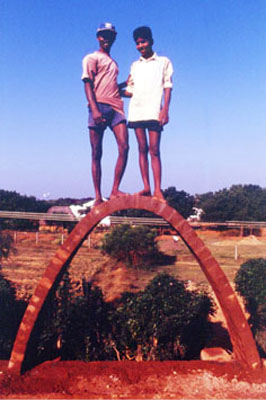
This vault has been built in 1995 and it welcomes the conference room of the training centre of the Auroville Earth Institute.
The vault has been initially waterproofed with a stabilised earth plaster, composed of 3 coats of various mixes of cement, soil, sand and a paste made of lime, alum and tannin. Note that this kind of waterproofing is still under research and is not disseminated.
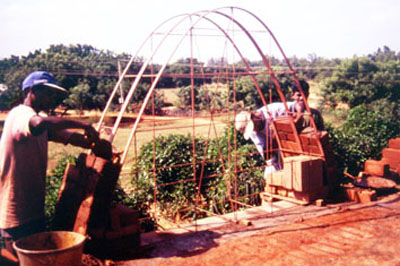

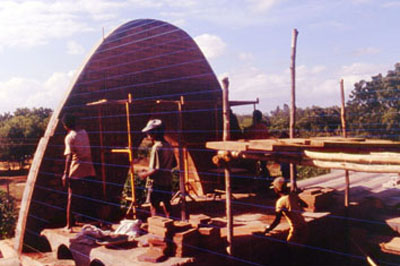
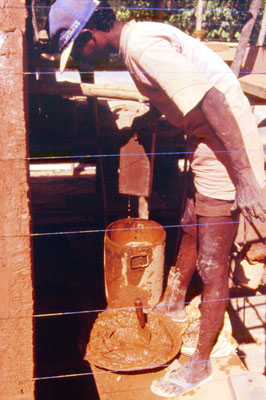
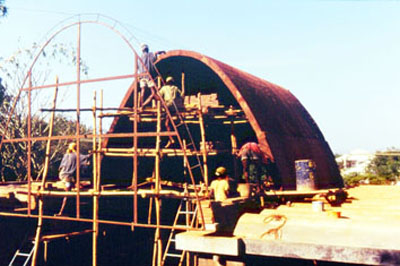

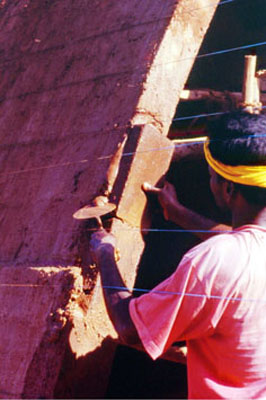
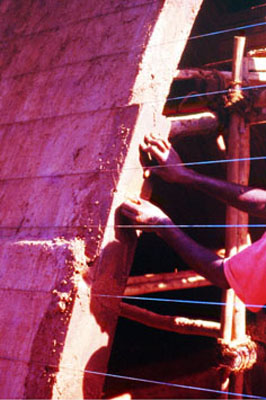
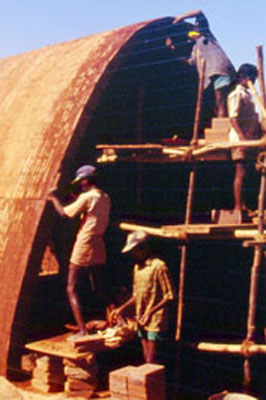
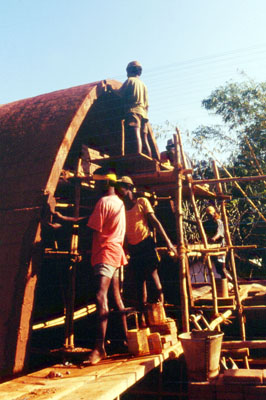
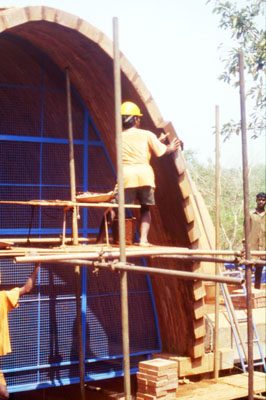
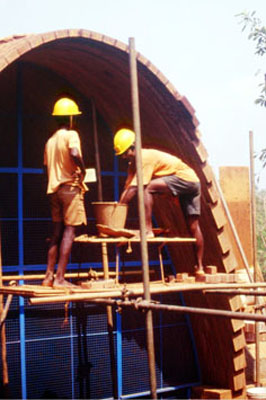
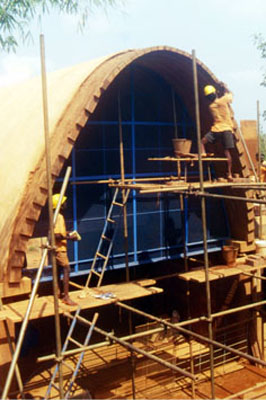
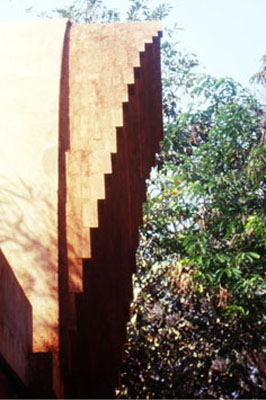
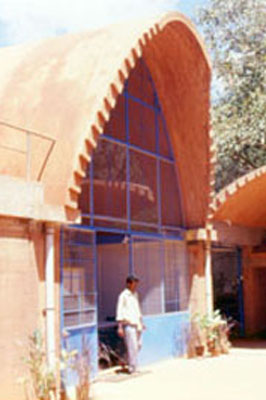
- Stability Notions
- Stability Calculations
- Arches Vaults & Domes (AVD) Construction
- Office of the Earth Institute
- Egyptian Vault
- Catenary Vault
- Deepanam AVD
- Semicircular Vault
- Equilateral Pointed Vault
- Bucket Pointed Vault
- Dhyanalinga dome
- Segmental Groined Dome
- Gayatri dome
- Equilateral groined vault
- AVD Video clips
Contact US
- Address:Auroville Earth Institute, Auroshilpam, Auroville 605 101 - T.N. India
- Phone:+91 (0) 413 - 262 3330 / 262 3064
- Email:info@earth-auroville.comOpens in your application

